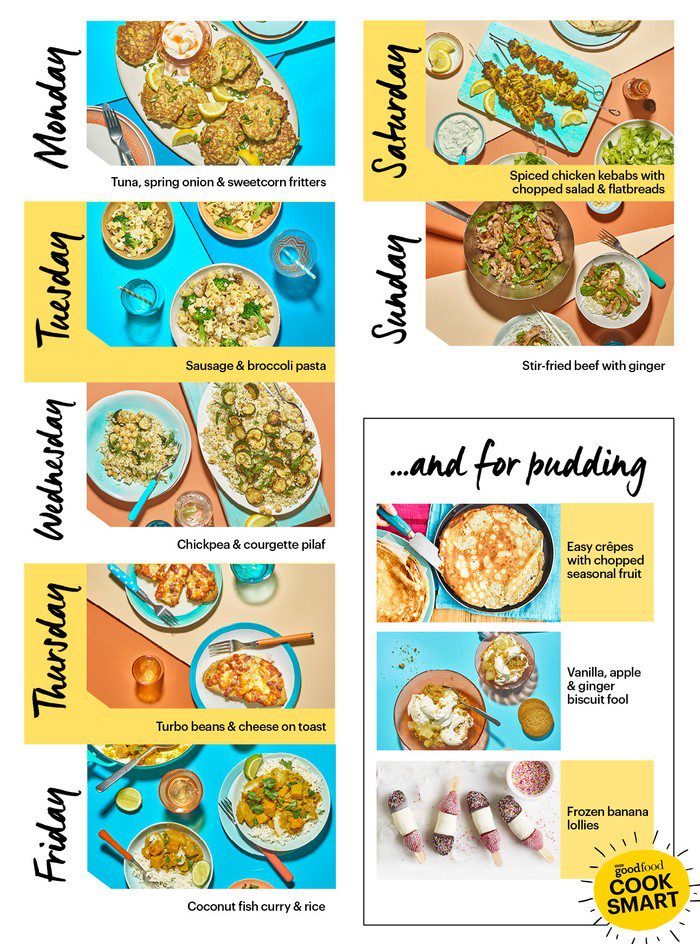With meal planning and smart grocery shopping, you can save money on food costs. The first step is to analyze your eating habits and plan your meals for the week ahead. Use budget-friendly ingredients like rice, beans, and vegetables and plan for leftovers. Make a grocery list and stick to it as much as possible, and shop smart by looking for sales and buying store brands. Cooking in bulk and properly storing food can also help you save money. Use leftovers creatively to make new meals. With these tips, meal planning on a budget can be easy and fun.
Meal Planning on a Budget: How to Plan Your Menu and Shop Smart
Preparing your own meals at home is the best way to save money on food costs. However, figuring out how to plan your menu and shop smartly for the ingredients can be a daunting task. Fortunately, with a little bit of planning and some budget-friendly tips, you can make meal planning and grocery shopping feel less like a chore and more like a fun challenge.
Step 1: Analyze Your Eating Habits
The first step to creating a budget-friendly meal plan is to analyze your current eating habits. Take note of how many meals you eat per day, whether you prefer to eat out or cook at home, and what types of food you tend to consume. This will give you a better idea of the foods you need to buy and the ones you can skip.
Step 2: Plan Your Menu
Once you’ve analyzed your eating habits, start planning your menu for the week ahead. Decide on which meals you’ll have for breakfast, lunch, and dinner. Consider using cheap, nutritious ingredients like rice, beans, and vegetables to stretch your budget. Plan for leftovers, which can save you time and money.
Step 3: Make a Grocery List
Before you head to the grocery store, make a list of all the ingredients you’ll need for your menu plan. This will help you avoid buying unnecessary items and save you money. Try to stick to your list as much as possible, but be open to substitutions if something is not available or if you find a better deal.
Step 4: Shop Smart
Once you’re at the grocery store, shop smart. Look for sales and deals, especially for items that are on your list. Don’t be afraid to buy generic or store brands, which are often just as good as name brands but cost less. Avoid buying pre-packaged or convenience foods, which are usually more expensive. Instead, buy whole foods and cook from scratch whenever possible.
Step 5: Cook in Bulk
One of the best ways to save time and money is to cook in bulk. Make extra portions of your meals and freeze them for later. This way, you’ll have ready-made meals whenever you need them. Plus, buying ingredients in bulk often costs less than buying small portions.
Step 6: Store Food Properly
Properly storing your food can help it last longer and save you money. Invest in good quality storage containers that keep your food fresh. Store food in the fridge or freezer as needed to prevent spoilage. Keep track of expiration dates and use up ingredients before they go bad.
Step 7: Use Leftovers Creatively
Don’t let your leftovers go to waste. Use them creatively to make new meals. For example, use leftover rice to make stir-fry or use leftover chicken to make chicken salad. Get creative and experiment with different combinations. You might be surprised at what you can come up with!
In Conclusion
Meal planning on a budget doesn’t have to be difficult. By analyzing your eating habits, planning your menu, making a grocery list, shopping smart, cooking in bulk, storing food properly, and using leftovers creatively, you can save money and eat healthy at the same time. Follow these tips and watch your food expenses shrink while your creativity in the kitchen grows.
